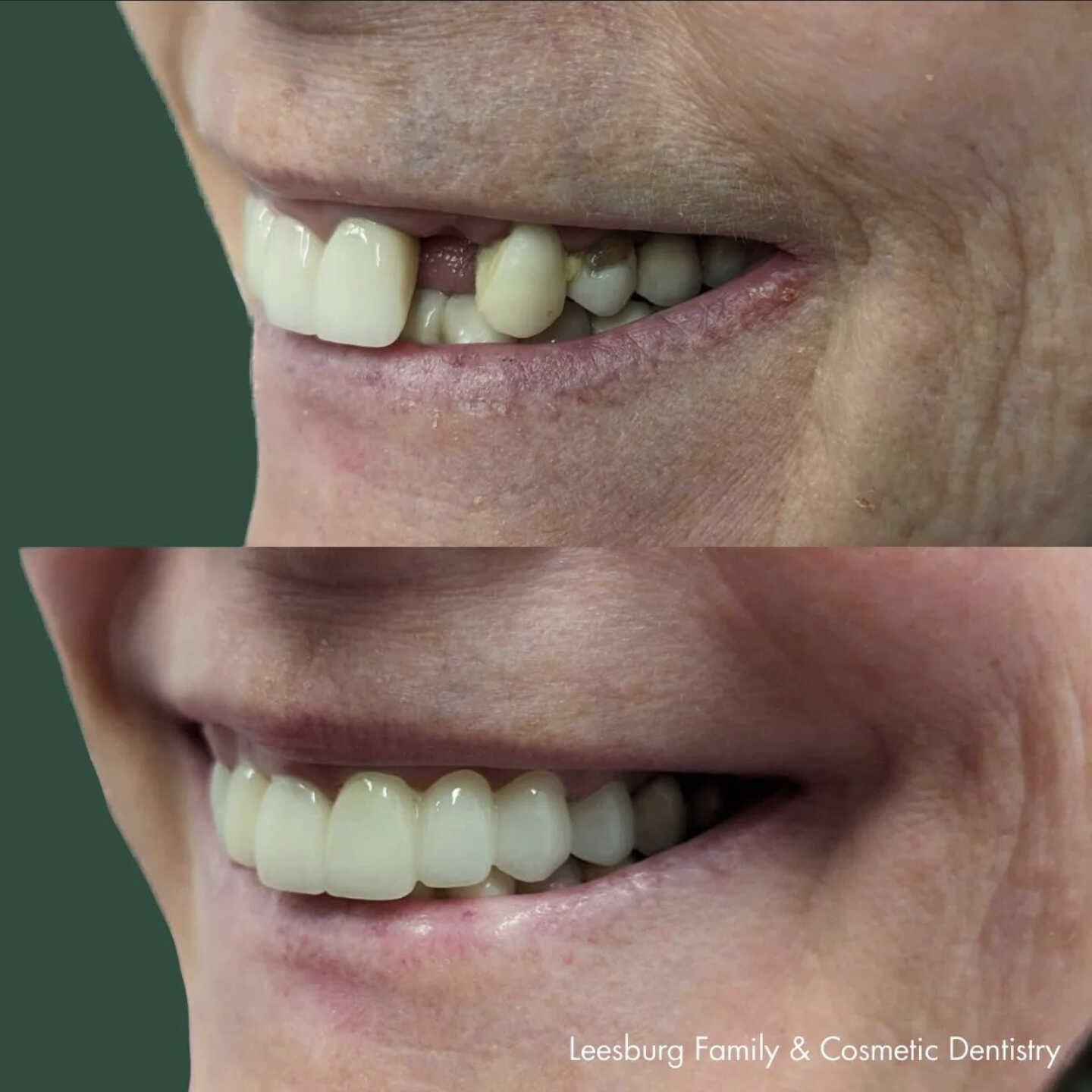Dental bridges are a remarkable solution that can restore both your oral health and your self-assurance. Whether you are missing one tooth or several, dental bridges are a tried-and-true method to bridge the gap and renew your smile.
Why Dental Bridges?
Dental bridges are a vital service because they address a common dental issue: missing teeth. Gaps in your smile not only affect your appearance but can also lead to oral health problems like shifting teeth and difficulty chewing. Dental bridges provide a durable and aesthetic solution, ensuring you can smile, speak and eat with ease once again.
What to Expect
When you choose dental bridges at Leesburg Family and Cosmetic Dentistry, you can expect a personalized and comfortable experience. Our skilled Leesburg dentist and team will conduct a thorough examination, create a custom treatment plan and ensure you are well-informed throughout the process. The procedure typically involves preparing the adjacent teeth, crafting the bridge and securely placing it, leaving you with a natural-looking, functional smile.
Benefits of Dental Bridges
- Restored Aesthetics: Dental bridges seamlessly fill gaps, enhancing your smile’s appearance.
- Improved Function: Regain the ability to chew and speak properly.
- Preserve Facial Structure: Prevents adjacent teeth from shifting, maintaining your face’s natural contours.
- Enhanced Confidence: Smile confidently and without self-consciousness.
- Durability: Dental bridges are a long-lasting solution when properly cared for.
We are dedicated to enhancing your oral health and overall well-being through dental bridges. Regain your smile, confidence and quality of life with our expert care from Dr. Kime Whitman. We invite you to call 703-831-3952 to schedule your consultation to see if our dental bridges in Leesburg, Virginia, are the best option for your specific dental needs.
Frequently Asked Questions About Dental Bridges
How long do dental bridges last?
With diligent care and routine dental visits, a dental bridge can serve you well for 5 to 10 years and potentially beyond. Maximizing your bridge’s longevity requires daily oral care and regular dental visits, preserving both its functionality and aesthetic appeal. At Leesburg Family and Cosmetic Dentistry, we provide guidance on how to best care for your dental bridge to maximize its durability, ensuring your investment in your smile is well worth it.
Are dental bridges permanent?
Dental bridges are considered a semi-permanent solution to missing teeth. They are securely attached to adjacent teeth or implants to fill the gap left by missing teeth. While not permanently affixed to the point of being irremovable by the patient, they are designed to be a long-term solution that only a dentist can remove or replace when necessary.
Can a tooth bridge be removed and put back on?
Typically, dental bridges are not designed to be removed and put back on by the patient. They are securely cemented to the supporting teeth or implants by a dentist. If a bridge needs to be removed, adjusted or replaced, this should be done by a professional. At Leesburg Family and Cosmetic Dentistry, our experts ensure that your dental bridge fits perfectly for comfort and functionality.
What is the process for getting a dental bridge?
Getting a dental bridge involves a detailed and patient-centric process. Initially, you will undergo a comprehensive examination to determine the best course of action. Next, we ready neighboring teeth and capture precise molds for crafting your tailored bridge, ensuring a flawless integration with your smile. The final step involves accurately fitting the bridge into the gap, seamlessly reinstating your smile and functional bite.
How do I know if I am a good candidate for a dental bridge?
Dental bridges are ideal for anyone missing teeth and wanting a reliable and visually appealing solution. Achieving the best outcomes depends on good oral hygiene and having enough bone density for secure anchoring. We recommend scheduling a consultation with Dr. Kime Whitman to assess your specific needs and determine if a dental bridge is the best option for you.
How can I maintain my dental bridge?
You can keep your dental bridge in excellent shape by consistently brushing twice a day, flossing carefully around it, and using antiseptic mouthwash for a thorough clean. We also recommend regular visits to our dentist and team for professional checkups and steering clear of biting into hard foods to keep the bridge secure and functional for a long, healthy lifespan.

